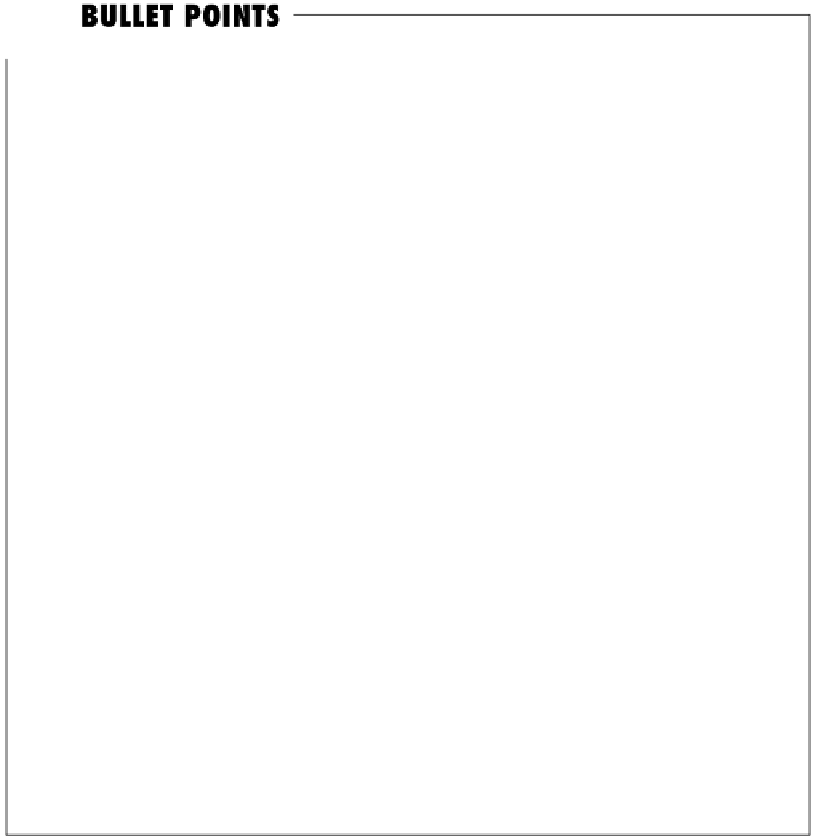HTML and CSS Reference
In-Depth Information
HTML5 added several new elements to
HTML.
<div> is still used for structure. It is often
used to group elements together for
styling purposes or to create structure for
content that doesn't fit into one of the new
structure-related elements in HTML5.
<section>, <article>, <aside>, <nav>,
<header>, and <footer> are all new
elements to help you structure your page,
and add more meaning than if you use
<div>.
Older browsers don't support new HTML5
elements, so be sure you know the
browsers your primary audience will be
using to access your web page, and don't
use the new elements until you're sure
they will work for your audience.
<section> is for grouping related content.
<article> is for self-contained content
like blog posts, forum posts, and news
articles.
<video> is a new HTML element for
adding video to your page.
<aside> is for content that is not central
to the main content of the page, such as
callouts and sidebars.
A video codec is the encoding used to
create the video file. Popular codecs
include h.264, Vp8, and Theora.
<nav> is for grouping site navigation links.
<header> groups content such as
headings, logos, and bylines that typically
go at the top of a page or section.
A video container file contains video,
audio, and metadata. Popular container
formats include MP4, OGG, and WebM.
<footer> groups content such as
document information, legalese, and
copyright that typically go at the bottom of
a page or section.
Provide multiple video source files to be
sure your audience can view your video
files in their browsers.
<time> is also a new element in HTML5. It
is used to mark up times and dates.


